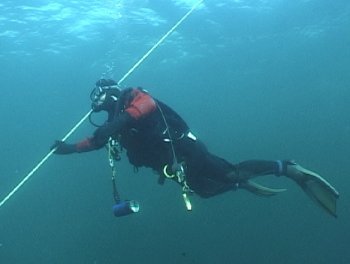Dive Lights
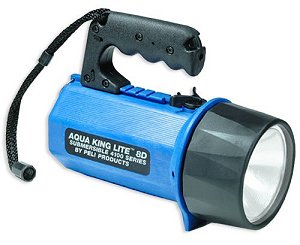
now extinct
In the murky waters off New Jersey, you are going to need a powerful dive light if it is to be of any real usefulness. There are many different types of underwater lights to choose from.
Bulb Type
Nowadays, LEDs are the only way to go. They are cheap, bright, and efficient. They throw a white light that is much better than the dingy yellow of the old incandescent technology. Incandescent lights are completely obsolete. HID lights were never reliable, and terribly expensive.
Beam pattern is probably more important than brightness, Your main light should throw a wide beam, for area illumination. Many lights throw a narrow pencil beam that appears to be brighter but is actually less useful. These are best used as backups and in special situations, such as camera strobe aimers. Some lights are adjustable.
Handle
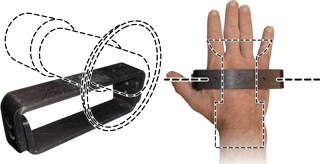
Small lights may have no handle at all, you simply grasp the body. This is a poor option for a main light, as it completely occupies that hand, making two-handed tasks difficult. Most larger lights have pistol grips. These may look neat, but again this is not a good solution, as it places the hand in an awkward position for doing anything else. Canister-type lights with separate corded light-heads are typically used with a "Goodman" handle (above) which supposedly frees the hand for other tasks, but in fact, does pretty much the opposite - any attempt to use the hand is likely to point the light off in a strange direction. Not only is the hand completely encumbered, but you need your other hand to free it, as opposed to simply letting go of the light.
Horizontal lantern-type handles are the best. With a lantern handle, you can hold the light in a useful position, and hold and use something else ( such as a wreck reel or a spear ) in the same hand, something that is simply impossible with a pistol grip or 'Goodman handle'.
Batteries
I used to use rechargeable batteries in my main light, which burns 8 D-cells. At a small cost in brightness, I saved a fortune on batteries over the years. But then I upgraded the light to use an automotive LED bulb that is about ten times as efficient. Standard batteries last half a season now, so no more need for rechargeables.
Nowadays, even main dive lights use 4 C-cells. In the old days before LEDs, that would have been a small backup light, but with modern technology, 4-C's is all you need.
Recommendation
It's no accident that I placed a picture of my trusty old Pelican Aqua King light at the top of this article. It has all the qualities I consider good in a main light: lantern grip, 8 D-cells for power, wide even adjustable light pattern. It is long and heavy, so you can set it down pointing at something and it will stay put. It is tough, reliable, easy to use, and relatively inexpensive. And sadly, no longer available.
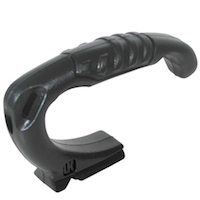
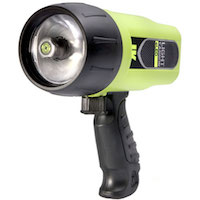
Looking over Leisure Pro's website, I see a lot of 4-C LED main lights for under $100. The lantern-style grip seems to have gone extinct except for the 8-C-cell LED Underwater Kinetics 'Light Cannon', which can be fitted with a lantern handle for a small extra cost. That makes it my sole recommendation for a primary dive light.
The fact is, you do not need a super-bright light underwater, nor do you need a massive burn-time. With experience, you will find that using the ambient light around you gives you a much wider and better view of your surroundings - the big picture - except of course for the colors. Constantly using a dive light gives you a very narrow view of the world, and following the beam of your light is no way to navigate. Such divers are much more prone to become disoriented and lost. It also scares away much of the marine life. Keep your light turned off most of the time, and use it just to look into dark corners while trying not to ruin your dark vision. Used like this, I recharge my light about once a month!
Get rid of the wrist lanyard on your light, and make up a much more useful rig like this. And remember, most dive lights are not meant to be used for extended periods out of the water - they may overheat and melt.
DIR
The DIR-recommended primary light is a back-mounted battery canister, with a Goodman-handled light head. I've spent several paragraphs tearing apart such setups, and I won't repeat myself.

